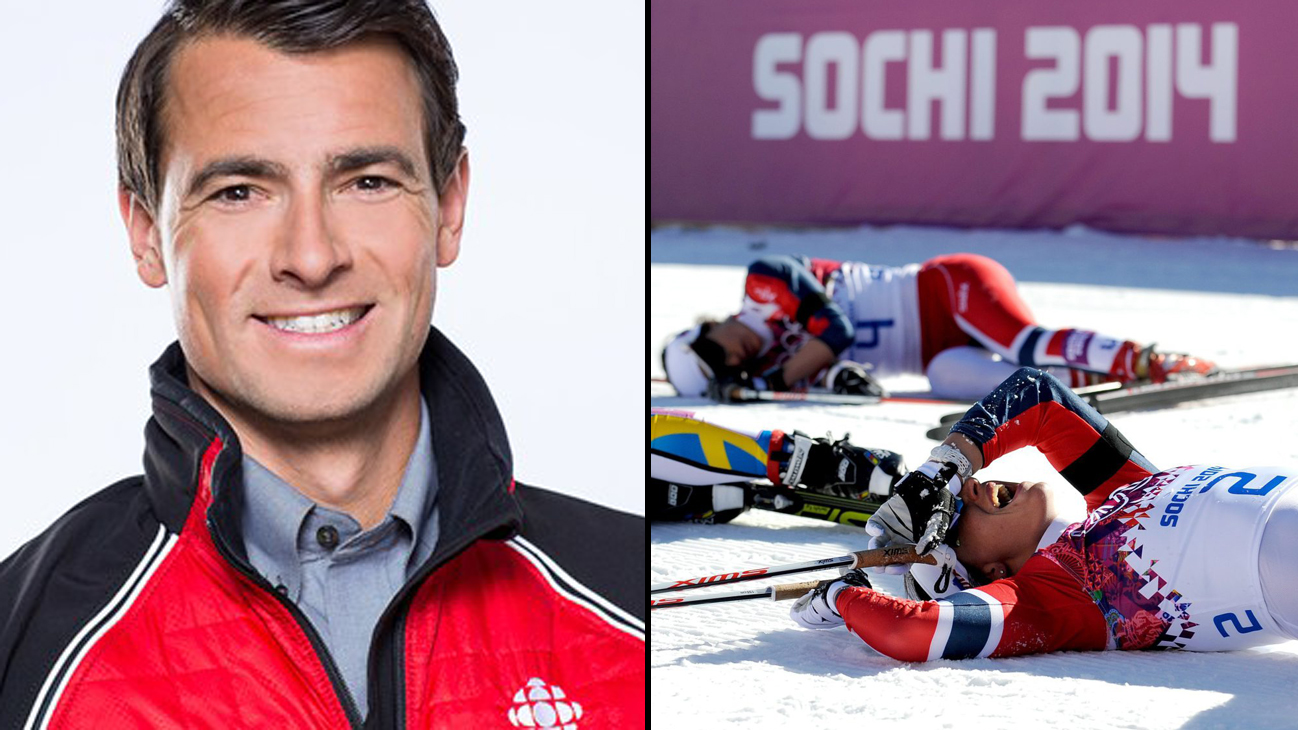Champion kayaker Adam van Koeverden first captured the world’s attention at the 2004 Olympic Games, where he was a double medalist, with gold and bronze victories. Since then, he has continued to dominate the sport, taking silver at both the 2008 and 2012 Olympic Games, earning two World Championship titles, and being named “Canada’s Athlete of the Year.” Currently in Sochi acting as an Olympic commentator for the CBC, Adam shares his thoughts on the pain many athletes endure to conquer their sport:
Of all the attributes that differ from sport to sport, I believe the most significant distinguishing factor is pain.
My objective is not to compare sports on their merits of anguish. I detest that arbitrary discussion: “Which sport is the hardest?” or “Who is a better athlete, a 100m sprinter or a freestyle swimmer?” I don’t like questions that don’t have answers; I prefer to analyze the relevant differences, and consider the unique role pain plays in different sports.
Every Olympic sport is hard. They all take immense skill, effort, practice and determination. But they don’t all inflict pain, and the type of pain they cause is as distinct as the event.
Endurance sport has a special relationship with pain. It’s right there in the name. The whole idea of cross-country skiing is predicated on training your body to endure as much pain as possible, and then manage to keep skiing fast while you inflict a maximum dose of it during a race.
That’s the game: maximum pain, every day in training. This causes a training effect known as enzymatic up-regulation. The enzymes in your muscles responsible for turning all that glucose and oxygen stuff into power and energy become more plentiful and efficient. Endurance athletes not only have a higher capacity to create lactic acid (a necessary evil, unfortunately) but they’re also better at clearing it out of their muscles, and better at tolerating high amounts as well.
When collapsing helps
If you’ve been watching the Olympics, you’ve probably seen a few cross-country skiers and biathletes embracing the white stuff in a heaving pile of torment only metres past the finish line.
It’s not soccer. There’s no foul call. They are just completely empty. Their throats are raw from hauling as much oxygen as possible into their barrel-like lungs, which are heavy and hot like molten iron. Their hearts are pounding on the inside of their ribcages like a subwoofer in a high school parking lot. I haven’t even started to think about their legs, their backs and triceps from poling madly, over 100 times per minute, in the final stretches of the race.
Cross-country is as tough as it gets from a pain perspective. It’s full-body and mostly uphill. In a word, ouch!
The result of falling down after a race is the same as what happens when you faint. Someone faints because their brain isn’t getting enough blood. Putting your heart and brain at the same level means that your pumper isn’t fighting gravity anymore. When skiers cross the finish line in a world of hurt, collapsing into a suffering mess of Spandex accomplishes that same goal. And misery loves company, so why not lie down with all your friends on the snow and experience that euphoric excruciation en masse?
I watched the cross-country team sprint today. It’s two skiers per team; they do three legs each, head-to-head with nine other countries. They tag off with a touch, and wait for their partners to return, and retrace their steps. While they wait the athletes jog lightly, shake their legs, some get massages and others hop on a stationary bike to keep the blood flowing, clearing poisonous lactic acid and CO2 from their muscles.
For the women, the course interval is about two and a half minutes; for the men it’s a touch less than four minutes. So the work-to-rest ratio is equal, just enough rest to go 100 per cent again, and then once more, for around 16 minutes for the women and 24 minutes for the men.
Sound fun? Only cross-country skiers would call that a “sprint.”
Pain to avoid
For sports on the other side of the pain continuum, pain isn’t the main objective, it’s actually the thing they’re trying hardest to avoid experiencing.
If an athlete in freestyle aerials skiing experiences pain, it’s almost certainly due to trauma. A fall or a tear owed to a slight miscalculation in the air, or at the landing. They screwed up. Put simply, pain in almost any sport involving tricks is to be avoided at all costs.
That’s an interesting difference. On one end of the spectrum pain is to be avoided, and on the other side experiencing maximum pain is tantamount to victory.
At the Winter Olympics, endurance sports are certainly a minority. Speed skating and cross-country (including biathlon and Nordic combined) are the lone wolves of the Winter Games. The Summer Games enjoy running in distances from 400m to the marathon, cycling in myriad forms, rowing, swimming, canoe/kayak, and combinations thereof.
Wait, I’ve got some good news.
These painful sports are still good for you, and fun (some may say even more so) at only moderate levels of discomfort! So get out there and up-regulate some enzymes; your heart and lungs and brain will all thank you at some point – hopefully not by fainting.
Thanks for reading. I hope it wasn’t too painful.

